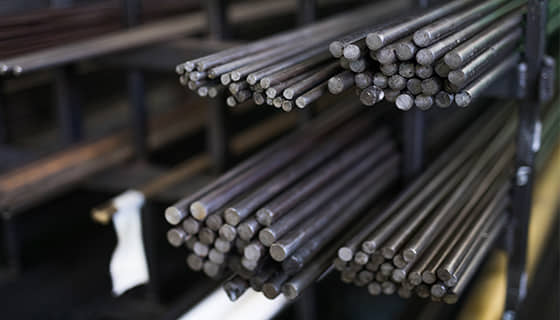Steel bars are essential components in various construction and manufacturing projects. Understanding the types, properties, uses, manufacturing process, quality standards, and maintenance tips for steel bars is crucial in ensuring the success and longevity of a project. In this blog post, we will delve into the diverse aspects of steel bars, shedding light on their significance and the advantages they offer across different applications. Let’s explore the world of steel bars and discover the multitude of benefits they bring to the table.
Types of Steel Bars
When it comes to construction and manufacturing, there are several types of steel bars available, each with its unique characteristics and uses. Here are some of the most common types:
Mild Steel Bars: Also known as low carbon steel, these bars are ideal for construction due to their flexibility and weldability.
Deformed Steel Bars: These bars are designed with ribs, lugs, or deformation on the surface to improve the bonding with concrete. They are commonly used in reinforced concrete structures.
High Strength Deformed Bars: These bars have higher tensile strength compared to mild steel bars and are suitable for supporting heavy loads in construction projects.
Round Bars: These bars have a circular cross-section and are commonly used in a variety of applications such as shafts, axles, and spindles.
Square Bars: With a square cross-section, these bars are often used in the fabrication of gates, grills, and fences.
Flat Bars: These bars have a flat surface and are widely used for frame construction, support braces, and as reinforcing plates.
By understanding the different types of steel bars available, you can make informed decisions about which type is best suited for your specific project. Whether you need high strength for heavy loads or flexibility for shaping, there’s a type of steel bar that fits your requirements.
Properties of Steel Bars
Steel bars are known for their exceptional properties, making them suitable for various applications across industries. Here are some key properties of steel bars that make them stand out:
- Strength: Steel bars exhibit high tensile strength, making them capable of withstanding heavy loads and stress without deformation.
- Durability: Due to their resistance to corrosion and wear, steel bars have a long lifespan, ensuring long-term structural integrity.
- Flexibility: Steel bars can be easily molded into different shapes without compromising their strength, allowing for versatile use in construction and manufacturing.
- Malleability and Ductility: These properties enable steel bars to be formed and shaped without breaking, adding to their adaptability for diverse construction needs.
- Heat Resistance: Steel bars can withstand high temperatures without significant weakening, making them suitable for applications in extreme environments such as industrial settings.
In comparison to other materials, steel bars outperform in terms of strength, durability, and adaptability, making them a popular choice for construction, infrastructure, and manufacturing projects.
Overall, the exceptional properties of steel bars make them a reliable and cost-effective solution for various construction and manufacturing applications.
When considering construction materials, the impressive properties of steel bars make them a top choice for engineers and designers seeking reliable, long-lasting, and versatile building materials.
Uses of Steel Bars
Steel bars have a wide range of applications across various industries due to their strength, durability, and versatility. Here are some common uses of steel bars:
Construction: Steel bars are extensively used in construction for reinforcing concrete structures, such as buildings, bridges, roads, and tunnels. Their high tensile strength and flexibility make them ideal for adding stability and support to concrete.
Manufacturing: Steel bars are used in the manufacturing of various tools, machinery, and equipment. They provide the necessary strength and resilience required for producing durable and reliable industrial components.
Automotive Industry: Steel bars are employed in the automotive industry for fabricating different vehicle parts and components. They are crucial for enhancing the structural integrity and safety features of automobiles.
Marine Applications: In the marine sector, steel bars are utilized in the construction of ships, offshore platforms, and other marine structures. Their corrosion-resistant properties make them ideal for withstanding harsh marine environments.
Infrastructure Development: Steel bars play a significant role in the development of infrastructure, including railway tracks, dams, and airport runways. They contribute to the longevity and robustness of these critical public assets.
Home Improvement: Steel bars find use in home improvement projects, such as creating fences, gates, and grills. Their sturdiness and ability to withstand external elements make them a popular choice for residential applications.
In summary, steel bars are indispensable across a wide spectrum of industries, making them a fundamental material for various construction, manufacturing, and infrastructure projects. Their adaptability and resilience make them a vital component in the development of modern infrastructure and industrial applications.
Manufacturing Process of Steel Bars
Steel bars are manufactured through a complex process to ensure strength and durability. The manufacturing process involves several key stages, including:
Raw Material Selection: The manufacturing process begins with the careful selection of raw materials, typically scrap metal and iron ore. The quality of these materials directly impacts the strength and quality of the steel bars produced.
Melting and Purification: The raw materials are melted in a furnace at extremely high temperatures. During this process, impurities are removed, and the chemical composition of the steel is carefully controlled to meet specific requirements.
Casting: Once the steel is molten and refined, it is cast into semi-finished forms such as billets, blooms, or slabs.
Hot Rolling: The semi-finished steel is then shaped and elongated through a series of hot rolling processes. This helps in improving the mechanical properties and surface finish of the steel bars.
Cooling and Annealing: The hot-rolled steel bars are cooled and then subjected to annealing process to relieve internal stresses and improve the ductility.
Surface Treatment: Finally, the steel bars may undergo surface treatment processes like straightening, polishing, and coating to meet specific requirements.
The manufacturing process of steel bars demands precision and adherence to quality standards to ensure the production of high-quality, reliable steel bars.
By understanding the meticulous process through which steel bars are manufactured, one can better appreciate their strength and versatility in various applications.
Remember, the manufacturing process for steel bars can vary based on the specific type of steel and the desired properties for the end application.
Quality Standards for Steel Bars
When it comes to quality standards for steel bars, it is essential to understand the specifications and certifications that ensure the reliability and performance of the material. Here are some key points to consider:
International Standards: Steel bars are manufactured according to international standards such as ASTM, DIN, BS, and JIS, which specify the mechanical properties, chemical composition, and dimensions required for different applications.
Grade Designation: Steel bars are assigned specific grade designations, such as ASTM A615 for deformed carbon-steel bars for concrete reinforcement, to indicate the yield strength and other mechanical properties.
Testing and Certification: Quality steel bars undergo rigorous testing for parameters like tensile strength, elongation, and chemical composition. Look for certifications from reputable organizations like ISO, CE, or national quality control agencies.
Traceability: Traceability of steel bars is crucial for ensuring their quality. Manufacturers provide traceability codes or markings to track the material’s origin and production batch.
Corrosion Resistance Standards: For applications in corrosive environments, steel bars should meet specific corrosion resistance standards such as ASTM A955 for stainless steel bars for concrete reinforcement.
Adhering to these quality standards is crucial to ensure the structural integrity and longevity of steel bars in various construction and industrial applications.
Remember, choosing steel bars that meet the required quality standards is essential for the success of any project. Always verify the certifications and specifications to guarantee the reliability and performance of the steel bars you choose.
Advantages of Steel Bars
Steel bars offer a multitude of advantages due to their unique properties and versatile nature. Here are some of the key benefits of using steel bars in construction and various other applications:
Strength and Durability: Steel bars are known for their exceptional strength and durability, making them suitable for supporting heavy loads and withstanding tough conditions.
Flexibility: Steel bars can be easily bent, cut, or twisted to suit specific project requirements without compromising their structural integrity. This makes them highly versatile in various construction and manufacturing processes.
Corrosion Resistance: Unlike other materials, steel bars are highly resistant to corrosion, making them ideal for outdoor and marine applications where exposure to moisture and harsh environmental conditions is common.
Cost-Effectiveness: Steel bars are a cost-effective option due to their long-term durability, minimal maintenance requirements, and the ability to be recycled at the end of their life cycle.
Fire Resistance: Steel bars are non-combustible and offer high resistance to fire, making them a safer choice for construction in comparison to other materials.
Sustainability: Steel bars are an environmentally friendly option as they can be recycled and reused, reducing the need for new raw materials and minimizing the overall environmental impact.
In comparison to other construction materials, steel bars offer an impressive array of advantages that make them a preferred choice in various industries.
Care and Maintenance Tips for Steel Bars
When it comes to ensuring longevity and optimal performance of steel bars, proper care and maintenance are crucial. Here are some essential tips to maintain your steel bars:
Regular Inspection: Conduct routine inspections to check for any signs of corrosion, damage, or wear and tear on the steel bars. This can help in identifying issues at an early stage.
Cleaning: Use a mild detergent or a solution of water and vinegar to clean the surfaces of the steel bars. Wipe them down with a soft cloth to remove any dirt, grime, or contaminants that may lead to deterioration.
Rust Prevention: Apply a rust-resistant coating or paint to the steel bars to protect them from corrosion. This is especially important for steel bars used in outdoor or high-moisture environments.
Proper Storage: Store steel bars in a dry and well-ventilated area to prevent moisture buildup which can lead to rust and corrosion.
Avoid Impact and Stress: Minimize impact and stress on the steel bars to prevent deformation or structural damage.
By following these care and maintenance tips, you can prolong the lifespan and maintain the structural integrity of your steel bars, ensuring their reliability and safety for various applications.



